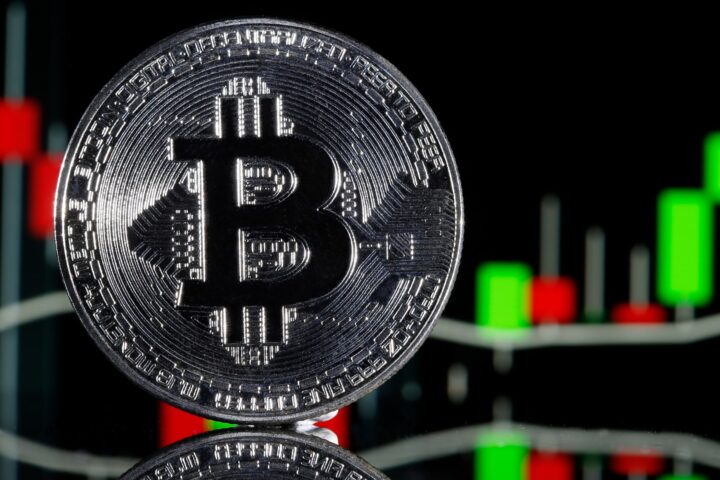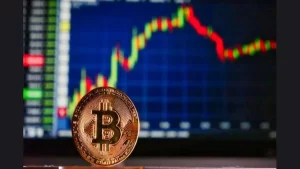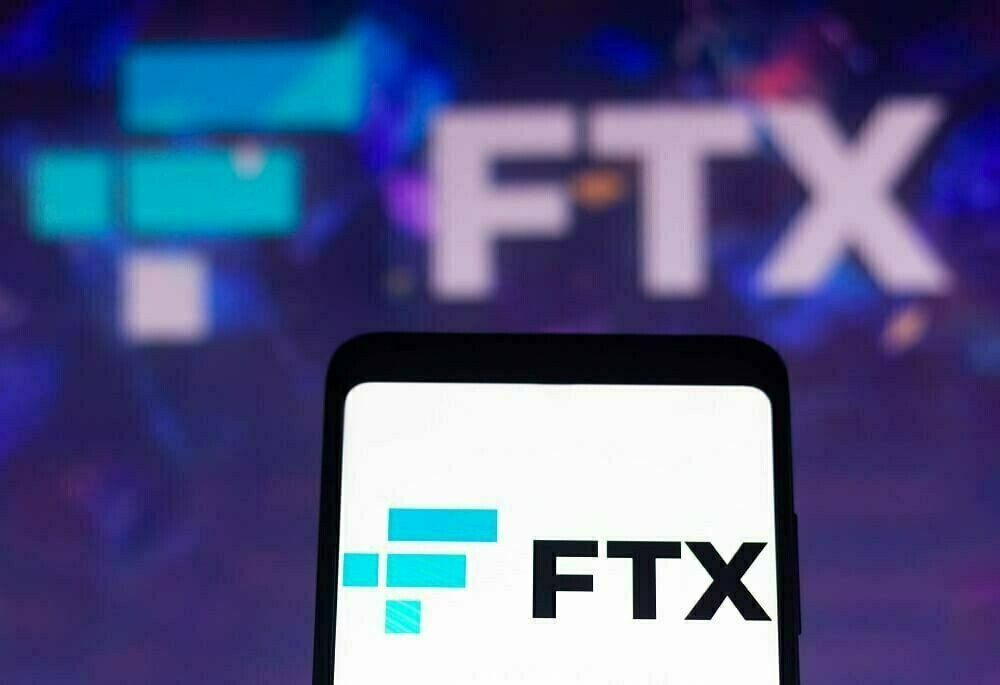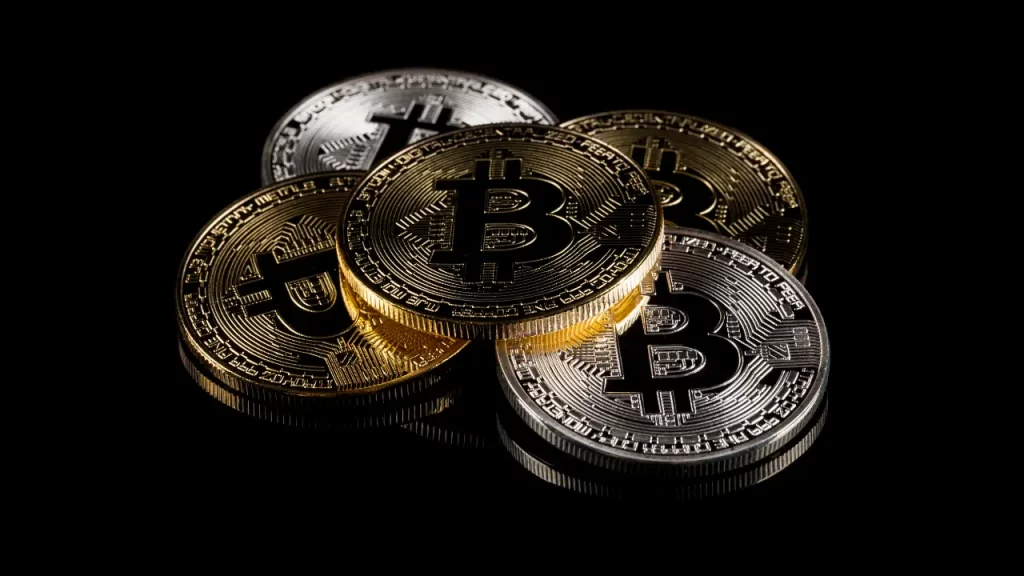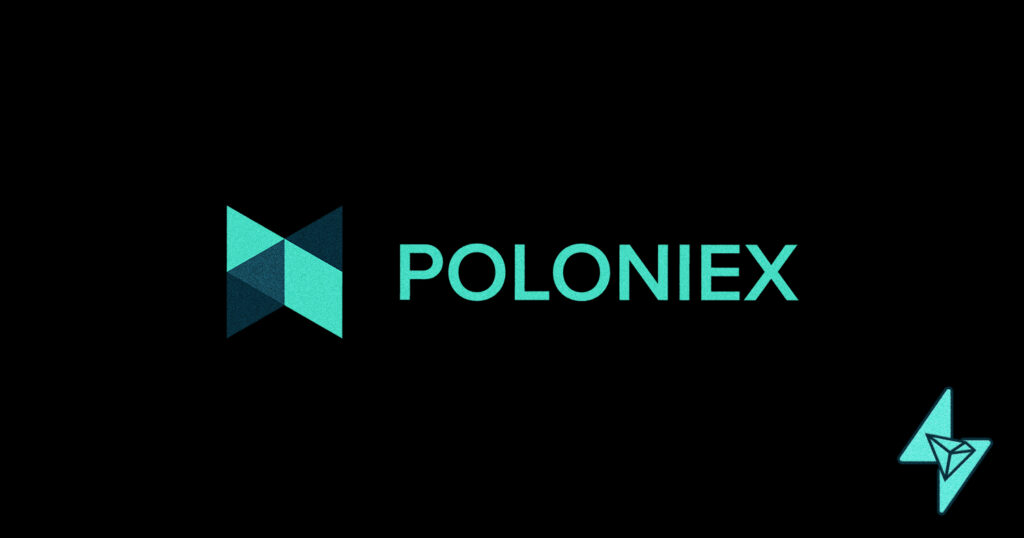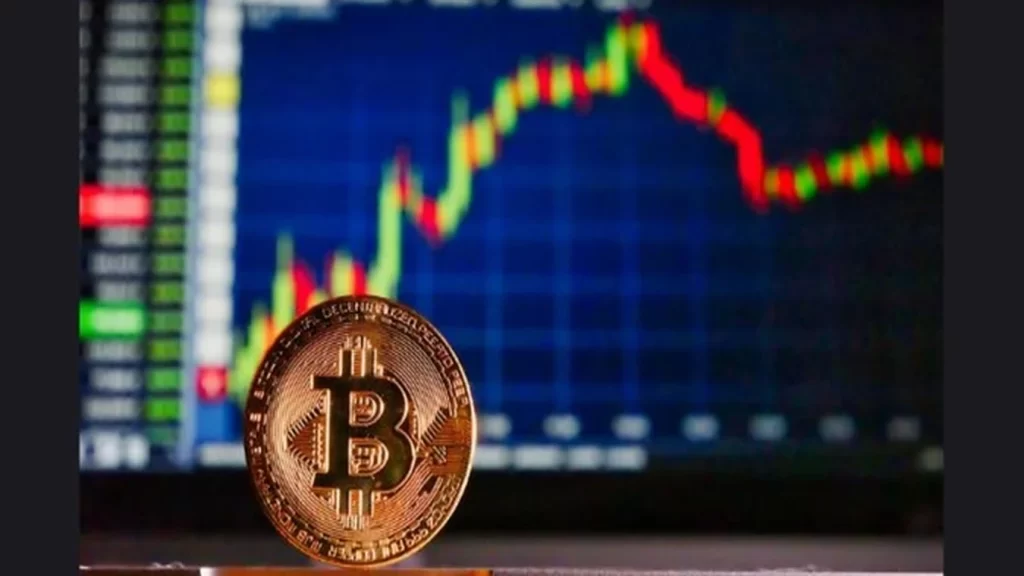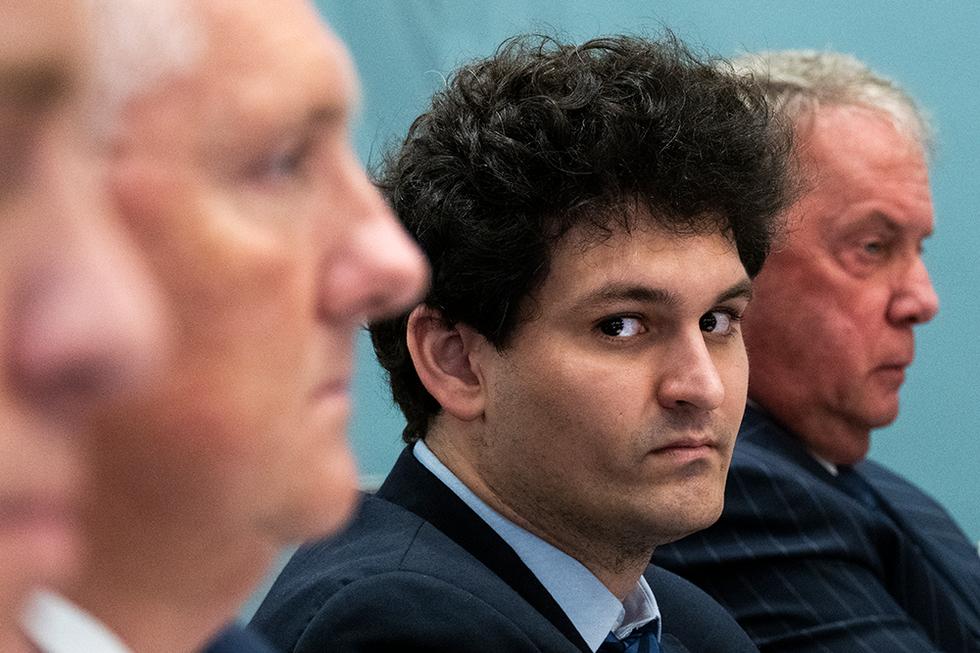Bankrupt cryptocurrency exchange FTX has received approval to sell approximately $873 million worth of trust assets as part of its efforts to repay creditors affected by its collapse in 2022.
The decision was announced in a filing made on November 29th in a Delaware bankruptcy court.
The assets to be sold comprise FTX’s holdings in various trusts issued by crypto asset manager Grayscale Investments and custody service provider Bitwise.
Grayscale Investments’ trusts are valued at $807 million, while Bitwise’s assets are valued at $66 million.
It’s important to note that the $744 million valuation mentioned in the court document is accurate as of October 25, 2023, and the assets have appreciated in value since then.
This approval follows a motion filed by FTX debtors on November 3rd, requesting the sale of six cryptocurrency trusts, including the Grayscale Bitcoin Trust (GBTC), Grayscale Ethereum Trust (ETHE), and Bitwise 10 Crypto Index Fund.
READ MORE: Bank for International Settlements Unveils Groundbreaking CBDC Privacy Protocols
FTX currently holds more than 22 million units of GBTC, valued at $691 million, and 6.3 million shares of ETHE, valued at approximately $106 million.
Additionally, FTX can now sell Grayscale’s Ethereum Classic Trust, Litecoin Trust, and Digital Large Cap Trust to generate funds for affected FTX customers.
The exchange’s administrators, led by John J. Ray III, have been diligently working to recover assets since the collapse of Sam Bankman-Fried’s former cryptocurrency empire in November 2022.
To date, approximately $7 billion in assets have been recovered, with nearly half of that amount coming from cryptocurrencies, totaling $3.4 billion.
In June, FTX’s debtors estimated that the total misappropriated customer assets amounted to $8.7 billion.
Meanwhile, Sam Bankman-Fried, the former head of FTX, was convicted on seven fraud-related charges on November 2nd and is scheduled to be sentenced on March 28, 2024.
He remains in custody at Brooklyn’s Metropolitan Detention Center and has recently bartered four mackerels for a haircut while awaiting his legal proceedings.
The Chicago Mercantile Exchange (CME) Bitcoin futures market demonstrated a surging demand from institutional investors, surpassing Binance’s BTC futures market in terms of size.
This development underscores a growing confidence among these investors in Bitcoin’s potential to breach the $40,000 mark in the near future.
CME currently boasts a Bitcoin futures open interest of $4.35 billion, a level not seen since November 2021 when Bitcoin reached its all-time high of $69,000.
This significant uptick in interest is seen as a clear indicator of heightened enthusiasm. However, the question that looms is whether this surge is substantial enough to justify further price gains.
The remarkable 125% increase in CME’s BTC futures open interest, soaring from $1.93 billion in mid-October, is closely tied to the anticipation surrounding the approval of a spot Bitcoin exchange-traded fund (ETF).
It’s important to note that this movement doesn’t necessarily correlate directly with market makers’ or issuers’ actions. Cryptocurrency analyst JJcycles raised this theory in a social media post on November 26.
Institutional investors have alternative options to navigate the high costs associated with futures contracts.
They can consider CME Bitcoin options, which demand less capital while offering similar leveraged long exposure.
Furthermore, regulated ETF and exchange-traded notes (ETN) trading in regions like Canada, Brazil, and Europe present viable alternatives.
It might appear naive to assume that the world’s largest asset managers would take substantial risks with derivatives contracts contingent on a decision by the U.S. Securities and Exchange Commission, expected only in mid-January.
Nonetheless, the undeniable growth in CME Bitcoin futures open interest serves as concrete evidence of institutional investors increasingly turning their attention to the cryptocurrency market.
READ MORE: Binance Takes Regulatory Turn
CME’s Bitcoin futures activity witnessed another noteworthy development on November 28. The annualized premium for CME Bitcoin futures, typically at 5% to 10% in neutral markets, spiked from 15% to 34%, eventually stabilizing at 23% by the end of the day.
Such a basis rate exceeding 20% indicates substantial optimism, suggesting a willingness among buyers to pay a premium for leveraged long positions.
Currently, the metric stands at 14%, indicating that whatever drove this unusual movement is no longer a factor.
Notably, during that eight-hour period on November 28, Bitcoin’s price rose from $37,100 to $38,200.
However, discerning whether this surge was prompted by the spot market or futures contracts is challenging, as arbitrage between the two occurs in milliseconds.
Instead of fixating on intraday price movements, traders should refer to BTC option market data for confirmation of institutional investor interest.
The data on the 30-day BTC options 25% delta skew, consistently remaining below the -7% threshold over the past month, supports the bullish sentiment among institutional investors using CME Bitcoin futures.
This casts doubts on the theory of whales accumulating assets ahead of a potential spot ETF approval. In essence, derivatives metrics do not indicate excessive short-term optimism.
While a spot ETF approval remains a driving force, with Bitcoin’s price hovering near $38,000, it seems that bulls will continue to challenge resistance levels.
However, if market makers were overwhelmingly confident in an SEC approval, the BTC options delta skew would likely be much lower.
Cryptocurrency exchange Poloniex, which recently fell victim to a $100-million hack on November 10, has announced plans to resume its withdrawal and deposit services.
The announcement was made via the platform X (formerly Twitter) on November 29.
According to Poloniex, the phased resumption of services will begin on November 30 at 2:00 am UTC, with a strong emphasis on prioritizing user fund safety.
The first step in this process involves restoring Tron deposits and withdrawals, followed by Bitcoin, Ether, Tether, and other cryptocurrencies over the course of the next two weeks.
In addition to reestablishing withdrawals, Poloniex is actively working on introducing new cryptocurrency listings, which will be available soon.
Users are advised to make use of the updated deposit addresses once they become accessible, as failure to do so will result in funds not being credited.
READ MORE: Spain Implements New Crypto Reporting Requirement for Residents Holding Assets Abroad
Poloniex has also announced an airdrop campaign for users who maintain their assets on the platform.
Developed in collaboration with HTX DAO, this campaign is scheduled to launch in December, with asset balance calculations starting on December 1.
The tokens for the airdrop will be sourced from a premium project about to be listed, with specific details to be unveiled in December.
It’s noteworthy that Poloniex is not only focusing on the resumption of services but also on security improvements following the recent hack.
The exchange is taking measures to reassure its user base and ensure the safety of their assets.
The announcement also highlighted the repeated hacks experienced by Sun-linked crypto platforms, including HTX and Poloniex, over the past two months.
These incidents resulted in a combined loss of nearly $240 million.
Despite the challenges, Poloniex is committed to maintaining its services and enhancing security measures to safeguard user assets in the ever-evolving world of cryptocurrency.
Standard Chartered has made a bold prediction that Bitcoin could surge to $100,000 within the next year, driven by the potential launch of exchange-traded funds (ETFs) sooner than expected.
In a research note released on November 28, the banking giant reaffirmed its optimistic price targets for Bitcoin.
The report suggests that Bitcoin may reach a six-figure price tag by the end of 2024, a significant jump from its current trading value of $37,700.
This bullish outlook is primarily based on the possible approval of Bitcoin spot price ETFs in the United States.
Geoff Kenrick, Head of EM FX Research, West, and Crypto Research at Standard Chartered, stated, “We now expect more price upside to materialize before the halving than we previously did, specifically via the earlier-than-expected introduction of US spot ETFs.”
This development raises the prospect of Bitcoin reaching the $100,000 mark before the end of 2024.
Standard Chartered’s positive stance on Bitcoin’s future performance builds upon its earlier optimistic outlook.
READ MORE: Bitcoin Holds Strong at $38,000 Amid Speculation of Price Surges and Fed’s Powell Speech
In July, the bank pointed to the decreasing availability of Bitcoin supply as a factor that could drive prices significantly higher. At that time, Kenrick predicted that Bitcoin could hit $50,000 by the end of 2023.
Additionally, he noted that miners might start hoarding more of their Bitcoin stocks due to an increasing hash rate and the upcoming block subsidy halving, which will reduce the amount of Bitcoin earned per block by 50%.
This increased profitability for miners would lead to reduced net Bitcoin supply, pushing prices even higher.
The spotlight is currently on the ETF narrative, with derivatives premiums rising and growing anticipation of a potential ETF approval in January.
Bitcoin’s price trajectory has been highly responsive to news related to ETFs, with rapid gains in November as investors anticipated regulatory approval before the January window.
However, there are concerns about large-volume investors selling off their holdings once the green light is given, potentially leading to a “buy the rumor, sell the news” scenario.
This situation could result in losses for latecomers to the market. Nonetheless, Standard Chartered remains confident in Bitcoin’s ability to reach new price milestones, especially if ETFs become a reality sooner than expected.
Binance, long seen as a crypto renegade, has taken a surprising turn toward regulation.
On November 21, the exchange pleaded guilty to money laundering and other federal charges, marking a significant departure from its previous laissez-faire approach.
To atone for its transgressions, Binance has agreed to pay a monumental $4.3 billion fine, the largest ever imposed by the U.S. Treasury Department.
Furthermore, Changpeng Zhao, or “CZ,” Binance’s founder, CEO, and principal owner, will be sidelined for at least three years, under the supervision of a court-appointed monitor.
But the ramifications extend beyond these penalties. Yesha Yadav, a law professor at Vanderbilt University, emphasized that the settlement ushers in a new era of systematic oversight for Binance.
It signifies the end of an era where the exchange operated in a borderless manner without a domestic regulator.
Binance will now face increased scrutiny over its products, risk management, governance, trading partnerships, and compliance standards, likely resulting in significant structural reforms to ensure compliance.
The agreement, reached with the U.S. Department of Justice (DOJ), the Treasury Department, and the Commodity Futures Trading Commission (CFTC), could have far-reaching consequences for the entire cryptocurrency and blockchain industry, according to Austin Campbell, an adjunct professor at Columbia University’s School of Business.
He sees it as a long-term positive, signaling crypto’s permanence and the importance of accessibility.
Binance’s significance cannot be overstated; it once processed the majority of all digital trades globally, with CZ regarded as a prominent figure in the industry.
READ MORE: Coinbase Stock Surges to 18-Month High as Binance Boss Pleads Guilty to Charges
The U.S., with its unique extraterritorial application of law, has sent a clear message to the crypto world: violations involving U.S. users, money laundering, and evading sanctions will not go unpunished.
However, Binance’s legal challenges may not be over, with separate charges from the SEC still pending.
These charges, broader than those brought by the DOJ, CFTC, and Treasury, allege commingling of client assets and misuse of customer assets, similar to the actions taken by FTX before its collapse.
Nonetheless, the plea deal offers some relief to the crypto sector, removing uncertainty about the government’s intentions towards Binance.
It could also pave the way for the launch of a Bitcoin spot-market ETF in January 2024 and potentially an Ethereum Spot ETF later in the year.
The settlement reflects the maturation of the cryptocurrency industry, moving away from its early days as a frontier sector.
Binance, once considered an “evasive pirate enterprise,” has evolved into a more compliance-oriented organization with KYC/AML programs and risk professionals in place.
It appears that Binance’s survival is in the interest of regulators, as a reformed Binance could set industry standards and represent a more mature and responsible entity.
However, Binance may face challenges as it relinquishes its image as a risk-tolerant firm focused on customer acquisition at all costs.
It could lose market share to smaller offshore exchanges, especially if the SEC’s broader charges come to fruition.
Nevertheless, the settlement offers Binance a path to redemption and a chance to align itself with evolving industry standards.
Thai cryptocurrency exchange Zipmex, currently facing financial turmoil, has unveiled a restructuring proposal that offers creditors an initial payout of 3.35 cents for every dollar owed, with the potential for increased payments in a recovery scenario.
This move comes as the exchange grapples with a substantial debt of $97 million owed to its customers.
According to a report from Bloomberg on November 29, Zipmex has outlined a plan that could potentially elevate the payout to 29.35 cents per dollar, contingent upon a successful recovery.
However, significant creditors have expressed their opposition to this proposed scheme, calling for an independent assessment of the company’s financial obligations.
While Zipmex CEO Marcus Lim did not confirm the specific details of the restructuring plan, he did highlight the existence of “inaccuracies” in the numbers reported by the media.
READ MORE: Coinbase Stock Surges to 18-Month High as Binance Boss Pleads Guilty to Charges
Zipmex initially encountered financial difficulties in the summer of 2022 when the cryptocurrency exchange, operating primarily in Southeast Asia, sought bankruptcy protection in Singapore.
At that time, the company needed a period to devise a strategy to address its outstanding debt of $53 million to crypto lenders Babel Finance and Celsius.
Throughout this period, Zipmex repeatedly requested extensions of the debt moratorium from the Singaporean court.
According to Bloomberg, creditors will have the opportunity to vote on the current restructuring plan in early December.
In a separate development in November, Zipmex announced its intention to suspend all digital asset trading activities in Thailand by January 31, 2024.
This decision followed an ongoing investigation by Thailand’s Securities and Exchange Commission, which commenced in early 2023.
The future of Zipmex remains uncertain as it navigates its complex financial situation and attempts to find a viable path forward.
The fate of the proposed restructuring plan and the resolution of its debts will likely have a significant impact on the exchange’s future operations and its ability to recover from its current challenges.
A recent lawsuit filed by a group of FTX users alleges that the Mercedes-AMG Petronas F1 Team and Major League Baseball (MLB) played a role in facilitating fraud through their promotional partnerships with the crypto exchange, FTX.
These twin class-action lawsuits, filed in a Florida district court on November 27, accuse the organizations of aiding and abetting FTX Group’s massive global fraud, as well as promoting unregistered securities.
In 2021, Mercedes F1 entered into a promotional agreement with FTX, prominently displaying the exchange’s logo on various assets, including cars, uniforms, and hats.
In a groundbreaking move, MLB also signed a similar deal with FTX, becoming the first professional sports league to do so.
MLB umpires even wore FTX’s logo on their uniforms, marking a historic departure from tradition.
The class complaint filing highlights that the inclusion of FTX.US patches on MLB umpire uniforms represented a significant milestone in the sport’s long history.
Similarly, Mercedes F1 prominently featured FTX’s logo on its cars, merchandise, and marketing materials.
READ MORE: Submit A Press Release to Bloomberg & Yahoo Finance
The lawsuit suggests that FTX regularly cheered on and congratulated Mercedes F1 and its drivers, creating an illusion of trustworthiness among fans.
The same group of FTX users is pursuing legal action against celebrities who endorsed the exchange, including former sports stars like Shaquille O’Neal and Tom Brady, on similar grounds of promoting unregistered securities.
Some of these celebrities have sought to dismiss the lawsuits, asserting that they did not encourage users to deposit money on FTX.
However, a few, such as American footballer Trevor Lawrence and YouTubers Kevin Paffrath and Tom Nash, have reached settlements in their respective cases.
In a significant development, FTX’s founder and former CEO, Sam Bankman-Fried, faced convictions on seven charges related to fraud, conspiracy, and money laundering in November.
Furthermore, just a year after sealing their partnership deals, both MLB and Mercedes F1 terminated their contracts with FTX in 2022.
MLB ended its five-year promotional agreement with FTX shortly after the exchange filed for bankruptcy, while Mercedes F1 severed ties with FTX and removed its logo from its cars and merchandise.
These lawsuits and actions by prominent organizations and individuals underscore the growing legal scrutiny surrounding the cryptocurrency industry and its partnerships, as regulators and investors seek to ensure compliance and accountability.
Crypto investment platforms eToro and M2 have received approval to offer their services in the United Arab Emirates (UAE) from the ADGM Financial Services Regulatory Authority, which oversees the Abu Dhabi Global Market (ADGM), the UAE’s international financial center.
eToro has been granted a Financial Services Permission (FSP), enabling it to operate as a broker for securities, derivatives, and cryptocurrency assets in the UAE.
This approval marks a significant milestone in eToro’s global expansion journey, according to Yoni Assia, the company’s founder and CEO.
In September, eToro also received a Crypto Asset Service Provider (CASP) registration from the Cyprus Securities and Exchange Commission (CySEC), emphasizing the importance of securing European operating licenses for crypto companies aiming for worldwide growth.
On the other hand, cryptocurrency exchange M2 has obtained recognition as a fully regulated Multilateral Trading Facility (MTF) and custodian.
This allows M2 to onboard both UAE residents and institutional clients. M2’s services in the UAE encompass crypto custody, UAE dirham-based Bitcoin and Ether trading, and on/off-ramp services for the dirham.
READ MORE: Robert Kiyosaki Urges Investors to Embrace Gold, Silver, and Bitcoin Amid Looming Inflation Threat
M2 CEO Stefan Kimmel views the timing of the license issuance as opportune, coinciding with a resurgence of positive investor sentiment.
The UAE has become increasingly attractive to international crypto players, as it continues to grant operational licenses.
Simultaneously, the ADGM’s registration authority has introduced comprehensive regulations for Web3 organizations in November.
These regulations, known as the Distributed Ledger Technology (DLT) Foundations Regulations 2023, are designed to provide regulatory clarity for blockchain foundations, Web3 entities, decentralized autonomous organizations (DAOs), and traditional foundations venturing into DLT.
Under these regulations, entities can establish a “DLT Foundation” by submitting a signed charter detailing the foundation’s initial assets, governance structure, and potential token issuance. A
dditionally, organizations must provide their white paper, tokenomics paper, and a link to a technical document known as a DLT Framework.
These measures aim to foster a regulatory environment that promotes transparency and accountability within the blockchain and Web3 space in the UAE.
New Spanish legislation is set to require residents holding cryptocurrency assets on foreign platforms to report their holdings by March 31, 2024.
The Spanish Tax Administration Agency, commonly referred to as Agencia Tributaria, has introduced Form 721, a tax declaration form designed for virtual assets held abroad.
This new regulation was initially announced in the Boletín Oficial del Estado, Spain’s official state gazette, on July 29, 2023.
Starting from January 1, 2024, and continuing until the end of March, individuals and businesses are mandated to disclose the amount of funds they have stored in foreign crypto accounts as of December 31, 2023.
However, the reporting requirement applies only to individuals with crypto assets valued at over 50,000 euros, which is approximately $55,000.
READ MORE: Bankless Co-Founders Propose Separation from BanklessDAO Amid Grant Controversy
Those who hold their assets in self-custodied wallets are required to report their holdings using the standard wealth tax Form 714.
The Agencia Tributaria has intensified its efforts to ensure compliance among local crypto asset holders.
In April 2023, it sent out 328,000 warning notices to individuals who had failed to pay taxes on their crypto holdings for the 2022 fiscal year, representing a 40% increase compared to the previous year’s 150,000 warnings. In contrast, in 2021, there were only 15,000 notifications.
Spain is taking proactive steps to establish comprehensive regulations for the cryptocurrency sector.
In October, the Spanish Ministry of Economy and Digital Transformation announced that it would implement the Markets in Crypto-Assets Regulation, the European Union’s first comprehensive crypto framework, at the national level in December 2025, six months ahead of the official deadline.
Furthermore, in November, Spain’s primary financial regulator, the National Securities Market Commission, initiated its first case against a technology provider for breaching crypto promotion rules.
These regulatory developments reflect Spain’s commitment to ensuring the responsible and transparent use of cryptocurrencies within its borders.
Coinbase, the popular cryptocurrency exchange, has recently experienced a surge in its stock price, reaching an 18-month high.
This boost in share value coincided with the guilty pleas of Binance, a rival exchange, and its former CEO, Changpeng “CZ” Zhao, who admitted to charges related to money laundering and sanctions violations in the United States.
On November 27th, Coinbase’s stock closed at $119.77, marking its highest level since May 5, 2022, when it closed at $114.25, as reported by TradingView data.
Although there was little movement in after-hours trading, this recent performance has propelled Coinbase shares up by approximately 256.5% year-to-date.
However, it’s worth noting that the stock is still down 65% from its all-time high of nearly $343 on November 12, 2021.
This surge in Coinbase’s share price occurred shortly after Binance and its founder, CZ, pleaded guilty to charges related to money laundering, U.S. sanctions violations, and operating an unlicensed money-transmitting business.
READ MORE: Hive Digital Technologies Expands Global Presence with Acquisition of Swedish Data Center
As part of the settlement, Zhao stepped down as CEO, and Binance agreed to comply with monitoring requirements from the U.S. Justice Department and Treasury Department for up to five years, amounting to a $4.3 billion settlement.
Coinbase has also benefited from the pending approval of U.S. spot Bitcoin and Ether exchange-traded funds (ETFs).
Analysis by Bloomberg ETF analyst James Seyffart reveals that Coinbase serves as the custodian for 13 out of 19 spot crypto ETFs currently awaiting approval from the U.S. Securities and Exchange Commission (SEC).
However, Coinbase is not without its challenges. The exchange is currently facing a lawsuit from the SEC, alleging that it failed to register with the regulatory authority and listed tokens that violated U.S. securities laws.
Coinbase had attempted to dismiss the lawsuit and questioned the SEC’s authority to oversee the cryptocurrency industry.
In summary, Coinbase’s stock has experienced a significant uptick in value following the legal troubles of its rival Binance and its founder.
The exchange’s involvement in pending cryptocurrency ETFs also contributes to its positive momentum, despite ongoing legal challenges with the SEC.

